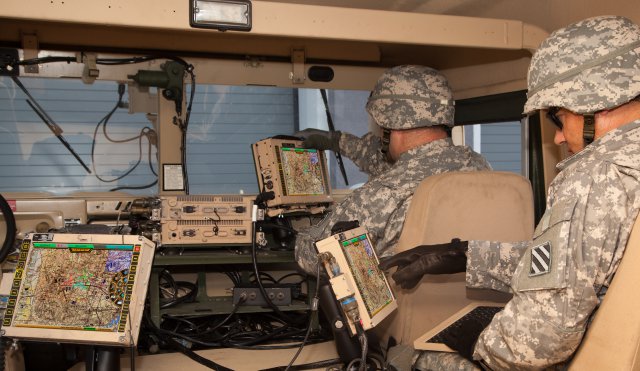Army Radios Get Low Marks From DOTE
Posted on

From handheld radios to high-tech headquarters, the Army’s top priority is what it calls the network. That’s not one project but a whole array of programs, each complex on its own. They all are supposed to interconnect so it’s no surprise that the Pentagon’s top tester has found plenty of problems. What is surprising in today’s report from the Director of Operational Test & Evaluation (DOT&E) is that the Army is having the most trouble with the simplest systems, the portable radios.
We’ve written before about the three-sided struggle between the Army, the incumbent contractors, and upstart firms over portable radios. It’s a saga that’s included secretive lobbying campaigns and a personal apology by a top General Dynamics executive. What DOT&E tells us is that the radios themselves still aren’t working as they should.
There are two kinds of radios, each being built by two contractors under what are technically “low-rate initial production” (LRIP) contracts, with “full and open competition” still to come. One is the handheld Rifleman Radio, built by General Dynamics and Thales; the other is the larger Manpack Radio, so called because it fits in a backpack, built by GD and Rockwell Collins.
“The Manpack radio has not yet demonstrated improvements in a realistic operational test environment,” DOT&E says scathingly. After an early 2012 test found the Manpack “not operationally effective” — DOT&E’s lowest grade — a second test that year found it had showed some improvement but that “it continued to exhibit poor reliability.” (Pro tip: If your cell phone dies during an important business call, that’s annoying. If your radio dies during a battle, that’s potentially lethal).
Then there’s the Rifleman Radio, the smallest but most numerous piece of the sprawling Army network. For example, Rifleman is a key component of the high-tech communications kit for foot troops known as Nett Warrior (the extra “t” is deliberate). But in a May 2013 Army test called a “Network Integration Evaluation” (NIE), DOT&E says, the AN/PRC-154A version of the Rifleman Radio “demonstrated numerous suitability issues that contributed to Soldiers concluding that this radio was not yet acceptable for combat in its current Nett Warrior configuration.” Overall, in fact, “the Rifleman Radio suitability shortfalls reduce the suitability of the Nett Warrior,” a system with which DOT&E is otherwise pretty content.
Both the Rifleman and Manpack programs, DOT&E snarls, are “schedule-driven” — that is, the Army pushes ahead with additional purchases on a predetermined schedule without waiting for proper testing or adjusting course based on test results. “Units are receiving Manpack radios that may have performance deficiencies,” the report warns, and the Army “is planning to field the AN/PRC-154A [Rifleman Radio] in early FY14 prior to completing dedicated operational testing.”
The Rifleman, Manpack, and Mid-Tier Networking Vehicular Radio (MNVR) — recently awarded to Harris Corp. but yet to be delivered — are supposed to connect to wider Joint Battle Command – Platform (JBC-P), which will replace the famous Blue Force Tracker, a kind of militarized Garmin that showed military units the GPS-precise location of both their own vehicle and other US forces. JBC-P just got started, so this is DOT&E’s first annual report on it. The verdict? “Operationally effective,” because troops and commanders could indeed communicate through it, but “not operationally suitable due to poor reliability” — i.e. they couldn’t rely on it working consistently — and “not survivable due to Information Assurance vulnerabilities” — i.e. it’s too easy for an enemy to hack into.
These small-unit systems all nest under what’s called WIN-T, for Warfighter Information Network – Tactical, which links forward command posts to battalions, brigades, and ultimately back to the United States. The basic WIN-T “Increment 1” now in Army units works fine out of fixed bases, like those troops operate from in Afghanistan, but the service is working hard on an “Increment 2” version that can network on the move for maneuver warfare. Though it singled out some specific pieces of WIN-T for criticism, DOT&E’s last report on WIN-T Increment 2 “assessed most configuration items as operationally effective” and even “operationally suitable” — i.e. it not only performs the mission, it performs it well enough for real-world operations. Coming from the harsh graders at DOT&E, that’s high praise.
Subscribe to our newsletter
Promotions, new products and sales. Directly to your inbox.
